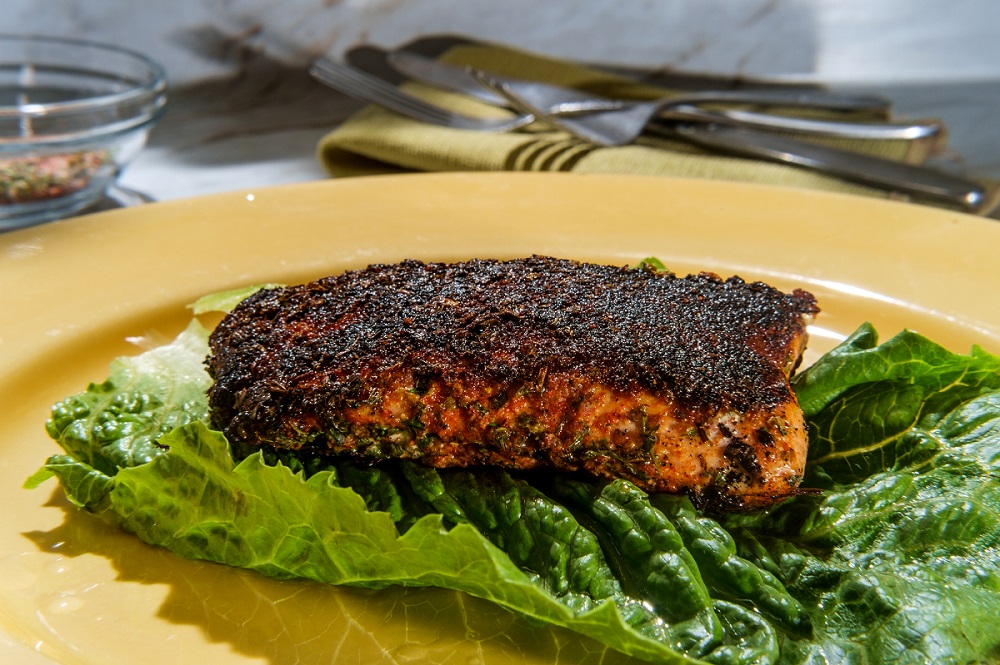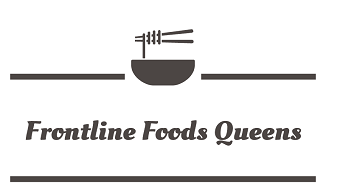Grilled vs Blackened Salmon? Cooking salmon with different temperatures and timeframes can result in unique textures and flavors. From smoking slowly at a low temperature to quickly searing at a high temperature, we’ll compare the differences between the more common grilling method, and blackened salmon.
Grilled or Blackened Salmon? Let’s find out.

Blackened Salmon
If you’re looking for a dish to boost your kitchen confidence, try making blackened salmon. The technique involves coating filets of salmon with a blend of spices, then pan-searing them until flaky and perfectly cooked. This method is both easy to execute and restaurant-worthy in taste.
Blackening can be done with any firm-bodied fish, and is also a popular method for chicken. The filets are brushed with butter, which contributes to the blackening color, then coated with a blend of herbs and spices known as “blackening seasoning.” The black color of the fish comes from the milk solids in the butter toasting and the spices charring when the fish hits the hot pan, adding a deep and rich flavor.
Salmon is a common ingredient in our home cooking, it’s widely available, healthy and can handle a wide range of cooking techniques and flavor profiles. We often make different salmon recipes such as smoked salmon, grilled salmon salad and cedar plank salmon which is featured in our cookbook. Blackened salmon is a great option for a weeknight meal as it cooks quickly but doesn’t lack in flavor making it a hit with the whole family.
Cooking fish should not be a bland experience, that’s why blackening fish is a great option. The flavors are bold and it can be scaled to serve one person or a crowd. It’s also quick and easy to make.
This recipe for blackening fish is perfect for busy weeknight dinners, yet special enough to serve to guests. Even if you have never cooked fish before, this recipe is easy to follow and provides all the necessary tips to ensure the best results.
Grilled vs Blackened Salmon
Grilled and blackened salmon are both techniques used to enhance the flavor and retain the juices of the fish. Both methods use dry heat to add flavor to the meal and create a crispy crust, but the taste of a blackened salmon is distinct from that of a grilled one.
The main difference between blackened and grilled food is in the seasoning. Blackening involves using a blend of herbs and spices to create a wild and bold flavor, while grilling can be done with any spice of your choice. Grilling also relies on the smoking process to add intensity to the flavor.
In summary, while blackening focuses on seasoning to enhance the flavor, grilling uses smoking to create a rich and intense flavor. Both methods can be used to create delicious and juicy fish dishes, but the taste will be different depending on the method used.

What Is “Blackening” Method
“Blackening” refers to a cooking method that involves coating the surface of an ingredient with butter and a blend of spices and herbs, then cooking it in a skillet over high heat to toast the spices and impart rich and unique flavors. The butter helps to crisp the spices on the outside while keeping the inside perfectly moist and it also contribute to the signature dark color of the dish.
Blackening originated as a fusion of Creole-Cajun cuisine and was first introduced to the public using redfish filets at a restaurant in New Orleans, Louisiana. The dish quickly gained popularity and is now easy to recreate at home.
It’s important to note that blackening differs from grilling in that it relies on the spices for its flavor, whereas grilling can be done with or without seasoning. Blackening requires the use of spices in order for the cooking technique to work, whereas grilling can simply rely on the smoking process to add flavor.
Blackening Spice Recipe
Blackening spices are a blend of herbs and spices used to create the unique flavor of blackened dishes, such as blackened salmon. There are many variations of blackening spice blend, and each cook has their own recipe.
Prepare your Home-Made Blackening Seasoning Mix
To make your own blackening seasoning mix, you will need: 1 tablespoon each of smoked paprika, cayenne powder, onion powder, garlic powder, ground black pepper, and sea salt. Additionally, add ½ tablespoon of dried basil, oregano, and thyme. Stir until all ingredients are evenly combined.
A good blackening seasoning should have a touch of heat, herbaceous notes, and a spicy flavor. It should revolve around chili, herbs, and spices to capture and release huge flavors with huge blasts of heat. You can customize the seasoning mix to suit your taste by adding more cayenne pepper for extra heat or dried basil for sweetness.
Store the seasoning in an airtight container in a cool, dry area for maximum shelf life. This will ensure the spice lasts as long as possible.
Pro Tip : You can add a little brown sugar to the blackening rub which will help the fish caramelize when it hits the heat of the pan.
Blackened Salmon Recipe
Cooking blackened salmon is a simple process that requires a few key ingredients and a sturdy skillet.
Ingredients
To make blackened salmon, you will need:
Salmon filets
Blackening spices (such as paprika, salt, garlic powder, onion powder, cayenne, thyme, and oregano)
Brown sugar (optional)
Butter
Lemon juice
Pro Tip: To add flavor and shine to the salmon, a mixture of oil, lemon juice, and chopped parsley can be used as a finishing touch. You can use the same fat you used to brush the salmon at the start of cooking, such as melted butter or avocado oil, to complete the dish.
Step by Step Instruction
First, pat the salmon filets dry, melt the butter, and stir together the blackening spices and brown sugar.
Brush the butter over the filets and top with the spice mixture.
Heat a skillet over high heat and place the filets flesh-side down in the pan.
Cook the blackened salmon filets on one side over medium heat for 6 to 8 minutes, using a fish spatula to ensure it doesn’t stick.
Once it’s ready, flip the filets over and brush the tops with a mixture of oil, lemon juice, and chopped parsley.
Cook for an additional 6 to 8 minutes or until the internal temperature reaches 145 degrees F.
If the bottom of the filets is becoming too dark, you can adjust the heat or flip the salmon on its side to finish cooking.
Recommended Tools
To make this recipe, you will need a fish spatula for flipping the salmon, a cast iron skillet for cooking, and measuring spoons for measuring the ingredients. A well-seasoned cast iron skillet is an essential kitchen tool, and it’s perfect for this recipe. Make sure to preheat the pan before you start cooking, and get ready to create delicious blackened salmon at home.
Pro Tips for Perfect Blackened Salmon
To ensure perfect blackened salmon, follow these pro tips:
– Keep the salmon cold before cooking to ensure the butter adheres better to the fish.
– Use a hot pan or cast-iron skillet to properly blacken the fish and prevent sticking.
– Allow the fish to cook undisturbed for a few minutes to create a buttery and flavorful crust.
– Brush the fish with butter before adding the spices, as this combined with the natural fats in the salmon will be enough to cook the fish. No need to add oil to the pan.
What To Serve With Blackened Salmon
When it comes to serving blackened salmon, there are several options to complement its bold flavors.
A salad, such as Caesar Shaved Brussels Sprouts Salad with Crispy Chickpea Croutons, makes for a healthy and refreshing option.
Alternatively, you can pair the salmon with a pasta or rice dish like Pasta al Limone or Lemon Rice. For a heartier option, try serving the salmon with roasted vegetables such as Brussels sprouts or potatoes and carrots.
There are also many creative ways to use blackened salmon in different dishes. Here are a few options:
– Blackened Salmon Pasta: Serve the salmon over a bed of pasta, such as pasta al limone or quick garlic pasta with olive oil and parmesan.
– Blackened Salmon Salad: Add the salmon as a protein to salads, such as spinach strawberry salad with balsamic poppy seed dressing. You can also serve leftover salmon cold or at room temperature.
– Blackened Salmon Scramble: Mix leftover salmon into scrambled eggs for a tasty and hearty meal.
Storage and Reheating
Storage
For best results, consume blackened salmon on the day it is made. However, leftovers can be stored in an airtight container in the refrigerator for up to 2 days. These leftovers can be used in salads or tacos the next day.
Reheating
To retain moisture and prevent drying, the best method for reheating blackened salmon is in a medium skillet over medium-high heat. Add little olive oil to the pan and cook until the salmon is warm throughout. Alternatively, you can reheat it in the microwave in 30-second intervals until warmed through.
Salmon Filets vs Steaks
When it comes to cooking salmon, there are two main options: salmon fillets or salmon steaks. Whole salmon filets are a great option for grilling as they can be cooked in one piece and make for a beautiful presentation. They are also perfect for buffet-style meals, as they can be used as a centerpiece. On the other hand, salmon steaks are smaller pieces of fish that are cut from the side or along the spine. They are a great option for a smaller meal or for individuals to enjoy.
Blackened vs Grilled
Blackening and grilling are two different methods of cooking that result in different flavors and textures.
Grilling involves cooking food over an open flame, such as charcoal, wood, or gas, which creates a caramelized crust and complex flavors. It also incorporates the flavors of smoke into the food.
Blackening process, on the other hand, uses high heat on a pan to char the butter and seasonings, creating a crust that helps retain moisture in the food. Both methods are delicious and can be used to make a variety of dishes.
Blackened Vs Seared
Blackening and searing are two different cooking methods that are often confused.
Both methods are used to create a crust on the surface of the meat, but the techniques used are different.
Searing uses a hot pan with a thin layer of oil, and the heat is usually around 375 degrees Fahrenheit.
Blackening, on the other hand, uses very high heat, up to 500 degrees Fahrenheit, and does not require any additional oil. The high heat and lack of oil in blackening creates a unique flavor and texture that is different from searing.
Blackened Vs Burnt
Blackening is a technique used to create a crust on the surface of ingredients using butter and a blend of spices and herbs, which is then cooked in a skillet over high heat to activate and enhance the flavors. On the other hand, burning is the result of exposing ingredients to high heat for too long, resulting in an inedible and bitter taste.
Blackening activates and elevates the flavors of the ingredients, while burning destroys them.
It is important to note that the temperature and duration of cooking process should be closely monitored to achieve the desired level of blackening without burning the food.
Frequently Asked Questions About Grilled vs Blackened Salmon
What is the difference among Blackened Seasoning, Creole Seasoning, and Cajun Seasoning?
All of these seasoning blends share common ingredients that put them in the same category, but the intensity of the spices differs. Cajun spice or seasoning is the spiciest of the three, while Creole seasoning is more herb-based. Blackening seasoning blend is considered to be a balance between the two. If you’re not sure which one to use, blackening seasoning may be a good starting point to determine your desired level of spice.
What’s the difference between blackened or grilled?
The main difference is in the seasoning. Blackening and charring both intentionally flirt with the thin line between food being burnt and well-cooked, but blackening always involves the use of herbs and spices.
What makes fish blackened?
Blackened fish is created by coating the fish in seasoning and then quickly searing it in a super hot skillet with butter. The seasoning and the milk solids from the butter give the fish a blackened crust.
Can I use barbecue sauce for grilling?
Despite the name of the sauce, it is possible to use barbecue sauce for marinating your steak right before grilling. You can use it to your liking.
Is blackened always spicy?
Generally, when something is “blackened”, it implies that there is some degree of spice present; however, it usually isn’t overly spicy. The blackening seasoning usually involves a combination of herbs, spices, and cayenne pepper to give it a slight kick. If you are not a fan of spicy dishes, it’s recommended that you make your own seasoning to your desired taste.
What is the difference between barbequed and grilled food?
Grilled food is cooked over direct high heat, while barbeque food is cooked under low, slow, and indirect heat. Grilling typically takes less time than barbecuing, but the latter is known for its tender, smoky flavor.
Does blackened salmon taste burnt?
No, blackened areas do not taste like burnt food. The technique of blackening involves cooking the salmon over high heat with a blend of herbs and spices, which creates a flavorful crust on the fish.
Is blackening seasoning the same as Cajun seasoning?
Blackening and Cajun seasoning are similar, but Cajun seasoning tends to be spicier. The level of spiciness can vary depending on the recipe and the amount of cayenne pepper used.
What is the best way to cook salmon for great taste?
Pan-frying or pan-searing is a great way to cook salmon as it results in a crispy and flavorful crust. Simply season the fresh salmon filet with salt and pepper, then cook them in a hot pan for a few minutes per side. A simple pan-fried salmon is a quick and healthy dinner option.


